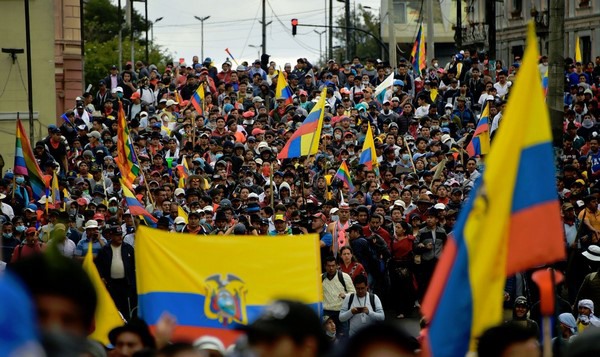In 2019, several protests raged through Latin America. Most of the protests were triggered by government actions that led to the citizens rising up. In Chile, protests began after an increase in public transportation fares and electricity costs in early October, though the country had already seen some unrest earlier in the year. In Ecuador, the protests began after President Lenín Moreno removed a fuel subsidy that had been in place since the 1970s . While the situation in Ecuador has calmed down, protests in Chile are still ongoing.
Ecuador: Roadblocks cause loss of product
After a long-standing fuel subsidy was removed in Ecuador, a nationwide strike took effect. The removal of the subsidies meant that fuel prices saw a tremendous increase. The immediate reaction by the country’s citizens was so intense that President Moreno declared a state of emergency. The Netherlands cancelled all outgoing flights to Ecuador following this and put out a cautionary travel advisory. A few weeks after the protests began, President Moreno reinstated the subsidy.

During the protests, the biggest issue for the growers and exporters in Ecuador were the roadblocks. Roadblocks were put in place by the government and this made it very difficult and sometimes even impossible for growers to transport their product to the ports – one pineapple producer lost multiple containers of the fruit during week 41.
Banana producers were also hit hard, and it is estimated around 3,000 containers of bananas were unable to leave the farms, and the fruit could not be kept fresh until the return of stabilization. These effects reverberated even after the protests had died down and normal exports had been resumed – Ecuador supplies around 70% of all of Argentina’s bananas, and the banana prices in Argentina rose steeply in November due to the effects of the protests.
Chile: Ongoing protests with minimal effects
The protests in Chile began in October due to an increase in public transportation prices, and have been ongoing ever since. The issues that the protesters want to address have since expanded, and a call for a change in the country’s constitution has been raised. While these protests have been occurring for months now, the overall effects haven’t been tremendous – though this might be due to the fact that Chile’s main exports won’t begin until after Christmas.

Chile’s cherry season began in November, and there have been a few negative effects for importers. One U.S. importer experienced delays in the cherry shipments, which caused him to be unable to participate in the Thanksgiving sales of week 48. China is a very important destination for Chilean cherries, and at the outset of the season some shipments were cancelled. A week later, however, shipments were underway in their usual volumes. The general observation about the current situation was that overall there wasn’t much disruption to the shipments.
One way in which the protests did cause a big effect was in the currency – currencies all over Latin America hit a record low at the end of November. The currencies of other Latin American countries were affected as well, specifically countries which were affected by their own protests such as Colombia and Bolivia. The Chilean government implemented a plan to recover the currency, which went into effect in the first week of December and will run through the end of May, 2020.
